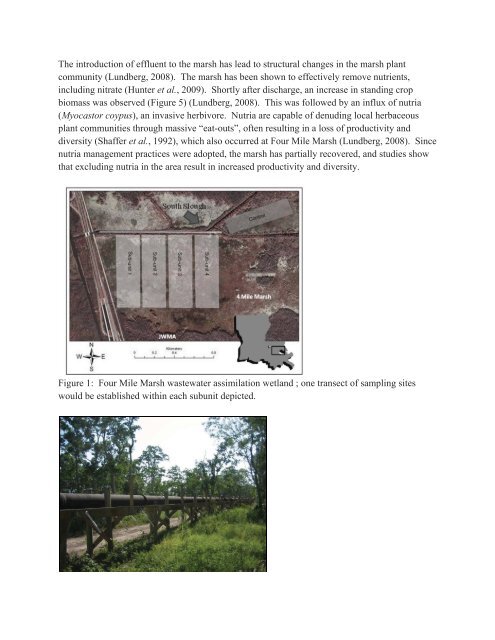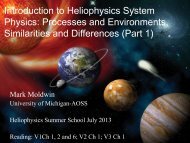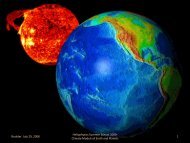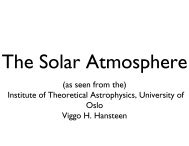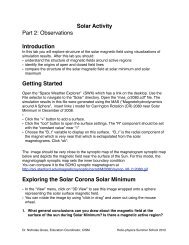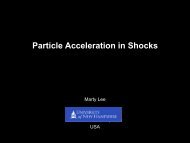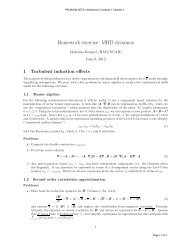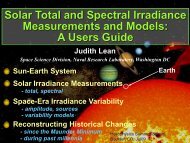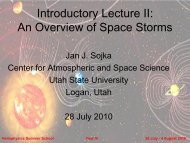Christopher Lundberg - VSP | UCAR Visiting Scientist Programs
Christopher Lundberg - VSP | UCAR Visiting Scientist Programs
Christopher Lundberg - VSP | UCAR Visiting Scientist Programs
- No tags were found...
Create successful ePaper yourself
Turn your PDF publications into a flip-book with our unique Google optimized e-Paper software.
The introduction of effluent to the marsh has lead to structural changes in the marsh plantcommunity (<strong>Lundberg</strong>, 2008). The marsh has been shown to effectively remove nutrients,including nitrate (Hunter et al., 2009). Shortly after discharge, an increase in standing cropbiomass was observed (Figure 5) (<strong>Lundberg</strong>, 2008). This was followed by an influx of nutria(Myocastor coypus), an invasive herbivore. Nutria are capable of denuding local herbaceousplant communities through massive “eat-outs”, often resulting in a loss of productivity anddiversity (Shaffer et al., 1992), which also occurred at Four Mile Marsh (<strong>Lundberg</strong>, 2008). Sincenutria management practices were adopted, the marsh has partially recovered, and studies showthat excluding nutria in the area result in increased productivity and diversity.Figure 1: Four Mile Marsh wastewater assimilation wetland ; one transect of sampling siteswould be established within each subunit depicted.


